TLDR Vitamin D and its receptor are crucial for bone health and can be influenced by certain fats and curcumin.
The study explored the role of the vitamin D hormone, 1,25-dihydroxyvitamin D(3) [1,25(OH)(2)D(3)], in regulating calcium and phosphate metabolism through its interaction with the nuclear vitamin D receptor (VDR) and its retinoid X receptor (RXR) partner. It highlighted the reciprocal relationship between 1,25(OH)(2)D(3) and fibroblast growth factor 23 (FGF23) in controlling phosphate levels, similar to the 1,25(OH)(2)D(3)-PTH axis for calcium regulation. The research also identified novel VDR ligands, including omega3/omega6 polyunsaturated fatty acids (PUFAs) and curcumin, which could activate VDR independently of 1,25(OH)(2)D(3), suggesting potential new pathways for VDR-mediated effects in various tissues, including bone, intestine, and skin/hair follicles.
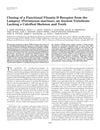 104 citations
,
May 2003 in “Endocrinology”
104 citations
,
May 2003 in “Endocrinology” Lampreys have a functional vitamin D receptor that may help detoxify harmful substances.
115 citations
,
December 2001 in “Endocrinology” Expressing the human vitamin D receptor in skin cells prevents hair loss in certain mice.
 1308 citations
,
March 1998 in “Journal of bone and mineral research”
1308 citations
,
March 1998 in “Journal of bone and mineral research” The vitamin D receptor is crucial for bone health and affects various body systems, with mutations potentially leading to disease.
109 citations
,
April 1997 in “Journal of Lipid Research” Linoleate deficiency in rats reduces growth and n-6 polyunsaturate accumulation, causing mild symptoms.
73 citations
,
July 1977 in “Archives of Dermatology” Applying safflower oil to the skin reversed fatty acid deficiency symptoms in 21 days.
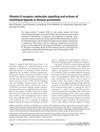 271 citations
,
September 2008 in “Nutrition reviews”
271 citations
,
September 2008 in “Nutrition reviews” Vitamin D receptor interacts with certain dietary components to help prevent diseases and regulate hair growth.
 1308 citations
,
March 1998 in “Journal of bone and mineral research”
1308 citations
,
March 1998 in “Journal of bone and mineral research” The vitamin D receptor is crucial for bone health and affects various body systems, with mutations potentially leading to disease.
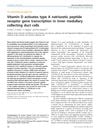 17 citations
,
April 2007 in “Kidney international”
17 citations
,
April 2007 in “Kidney international” Vitamin D boosts a specific gene activity in kidney cells that could improve heart and kidney function.
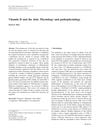 158 citations
,
August 2011 in “Reviews in endocrine and metabolic disorders”
158 citations
,
August 2011 in “Reviews in endocrine and metabolic disorders” Vitamin D and its receptor regulate skin functions like cell growth, immunity, hair cycle, and tumor prevention.
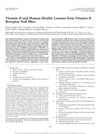 1533 citations
,
October 2008 in “Endocrine reviews”
1533 citations
,
October 2008 in “Endocrine reviews” Mice without the vitamin D receptor have bone issues and other health problems, suggesting vitamin D is important for preventing various diseases in humans.
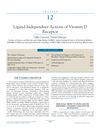 December 2017 in “Elsevier eBooks”
December 2017 in “Elsevier eBooks” The vitamin D receptor helps maintain hair and bone health even without binding vitamin D.







